Tibetan Thangka of Palace Kalachakra Mandala
INTRODUCTION TO THANKA
A thangka, variously spelt as thangka, tangka, thanka, or tanka (Nepali pronunciation: [ˈथान्का]; Tibetan: ཐང་ཀ་; Nepal Bhasa: पौभा), is a Tibetan Buddhist painting on cotton, silk appliqué, usually depicting a Buddhist deity, scene, or mandala. Thangkas are traditionally kept unframed and rolled up when not on display, mounted on a textile backing somewhat in the style of Chinese scroll paintings, with a further silk cover on the front. So treated, thangkas can last a long time, but because of their delicate nature, they have to be kept in dry places where moisture will not affect the quality of the silk.
| Size | 36X44cm |
| Material | Cotton Canvas and Natural Colors |
$173.00
CompareKALACHAKRA MANDALA : INTRODUCTION
The Tibetan word for mandala is “kilkhor” which means “centre of the circle with exteriors walls and surrounding environment.” Mandalas may be created with precious jewels, flowers, dyed rice, coloured stones, or coloured sand. Sand, traditionally made from crushed precious stones, is considered the most efficacious materials because of the precious substances involved and the great skill required to create the mandalas’ exquisite details. Since each grain of sand is charged with the blessings of the ritual process, the entire sand mandala embodies a vast store of spiritual energy.
BACKGROUND
According to Buddhist history, the purpose, meanings, and techniques involved in the spiritual art of sand mandala painting were taught by Shakyamuni, the historical Buddha in the sixth century B.C. in India. Over the centuries the Kalachakra teachings have been transmitted in an unbroken lineage from teacher to student. In the 11th century the Kalachakra went from India to Tibet and during the 18th century the VII Dalai Lama introduced it to the Namgyal Monastery. This continuous lineage extends to the XIV Dalai Lama of our own time.
Each mandala is a sacred mansion, the home of particular meditational deity, who represent and embodies enlightened qualities ranging from compassion to heightened consciousness and bliss. In the Tibetan Buddhist tradition, mandalas are created for rituals of initiation in which a highly qualified teacher grants permission to advanced disciples to engage in the tantric meditation practices. Both the deity, which resides at the centre of the mandala, and the mandala itself are recognised as pure expressions of the Buddha’s fully enlightened mind. Symbolically the deity confers the initiations and the mandala is where the initiations takes place. Through the initiations ceremony the seed of enlightenment in each person’s mind is nourished by the dynamic process of visualising and contemplating a mandala.
In essence the ceremony involves the transportation of disturbing emotions into beneficial intuition and wisdom. Normally such an initiation is given at the request of an individual or group of people. The altruistic motivation of the artist and sponsor is essential to the creation of mandala.
| Size | 36X44cm |
| Material | Cotton Canvas and Natural Colors |

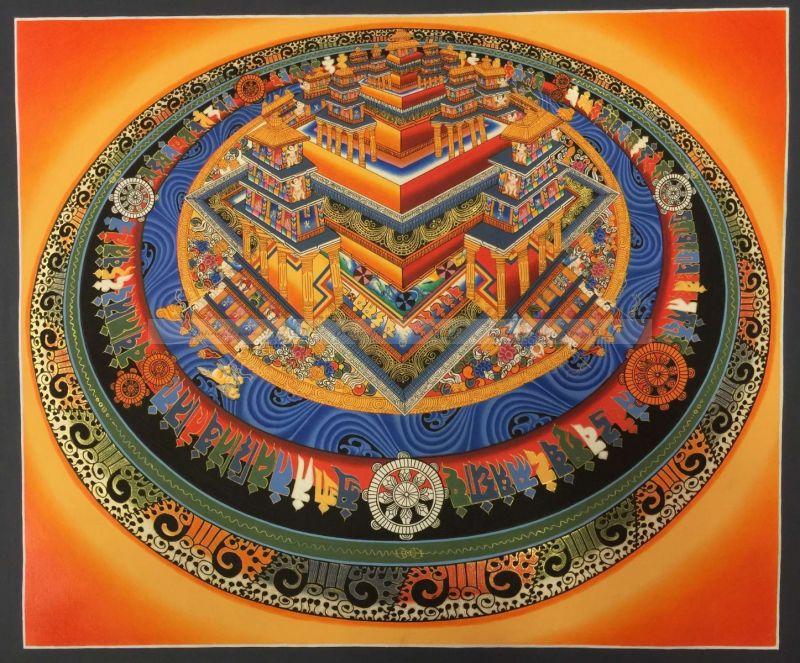
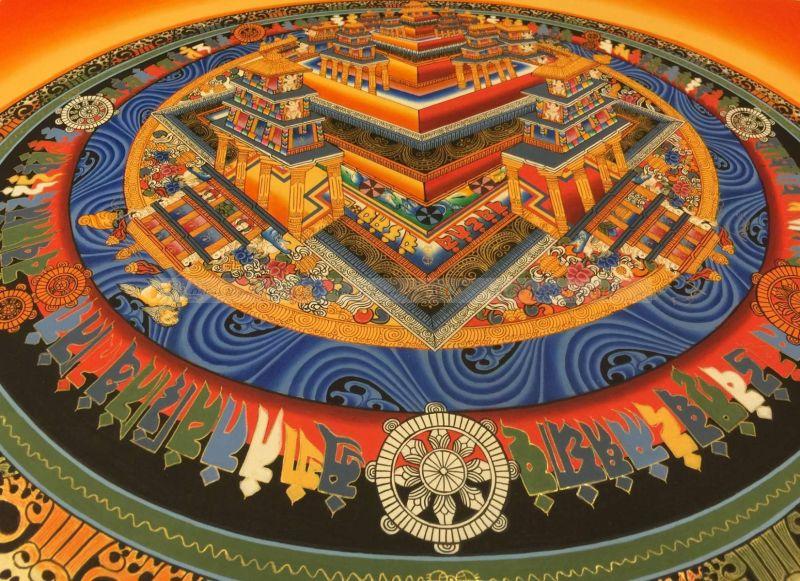
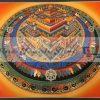
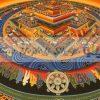


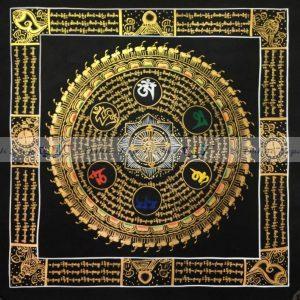


There are no reviews yet.